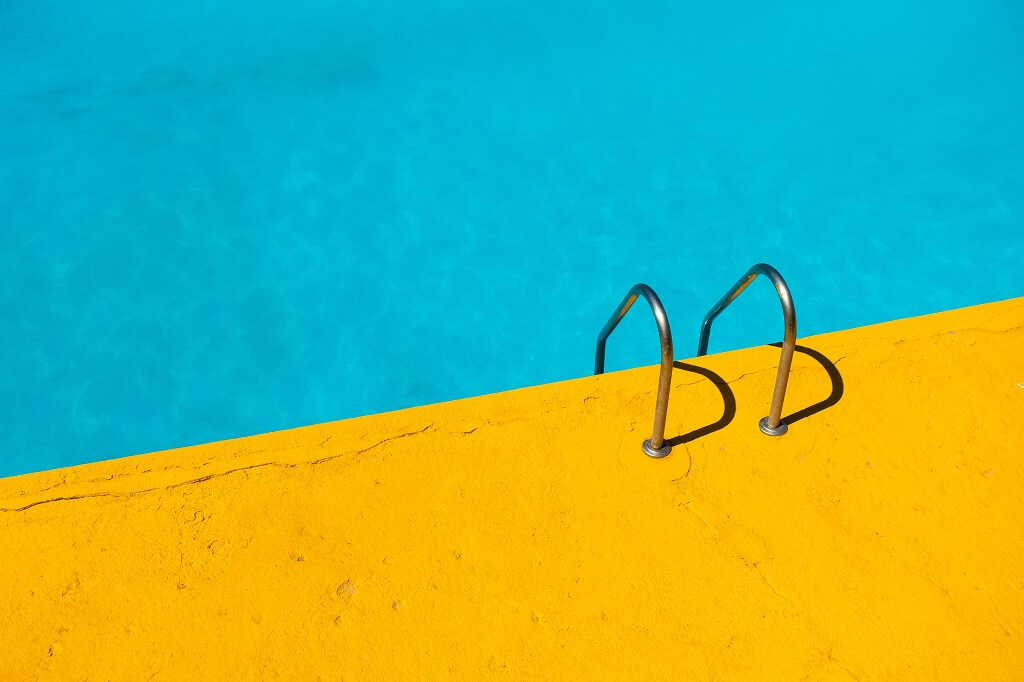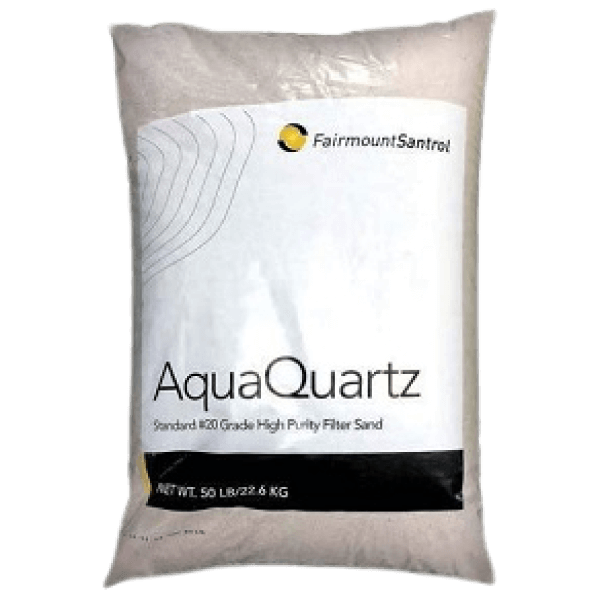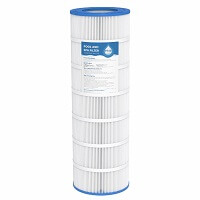This expert guide will show you how to ensure your pool stays clean and safe using the best pool filter. You need many pieces of gear for your pool, but the filter is one of the most important. This is why you must get it right.
Read on to learn about what a pool filter does, the different types, how to choose the right one, and how to maintain them.
So, let's get to it!
What is the role of a pool filter?
A pool filter is designed to work with your pool pump. The pump will pump water through the filter while the filter eliminates the junk in the water. This ensures that the water is clean and safe, free of algae species, debris, oils, or dirt.
Both the filter and the pump comprise the filtration system. The performance of the filter depends on its size. Larger filters perform better. You can either get a small pump alongside a larger tank if you have a small pool.
There are three kinds of pool filters – Sand, DE (diatomaceous earth), and cartridge.
What are the pool filter types?
We have briefly mentioned the kinds of pool filters, but we will now take a closer look at each, alongside their prices, upsides, and downsides.
Sand
The filter media in sand filters is a pool filter sand derived from either a base compound of silica or its combination with other materials like crushed glass.
The sand stays in a hollow tank fitted with a multiport valve. The valve has more than one position to work in the vacuum, filter, waste, or recirculation modes. It is vital to backwash your sand filter models regularly. This is the only way to get rid of the sand stuck in the flow pips. Flushing means sending the water through the filter in reverse mode to get out of any materials inside.
The sand filters are effective against contaminants of about 20 microns (a millionth of a meter). They can deliver up to seven years of filtration performance.
Upsides
They cost lesser than other filter types. They also last long and requires relatively low maintenance.
Downsides
They are only effective against 20 microns of debris. You must constantly backwash them, and this may distort your pool’s chemistry or lower the water levels.
So, if you can live with the constant backwashing, the sand unit is a great affordable option.
DE
The filter media in DE pool filters is diatomaceous earth matter – a naturally occurring sedimentary rock grounded into soft white powder. The setup includes a large tank with grids or fingers inbuilt in it. The grids are then coated with the DE powder. The powder is to DE filters as what sand is to sand filters. It is essentially responsible for getting rid of the debris and dirt.
However, DE can remove debris down to 5 microns, making it more efficient than sand models. These models are preferred among users because of their excellent performance, but they require slightly more maintenance than others.
You must backwash and replenish the system with fresh DE powder frequently. If your unit has grids, you must detach them and clean them manually, before reapplying the fresh powder.
Upsides
It is easy to clean and helps to conserve energy and water.
Downsides
You must replace the cartridge every 3 years, and it is not really compatible with large pools.
If you are in the market to get a pool filter that makes your pool water as clean as possible using a natural method, this is your best bet.
Cartridge
Cartridge pool filters rely on replaceable cartridges to filter your pool water. They filter down to 10 microns, and you only need a high-pressure hose to clean them. They use the least energy of the bunch and are not as expensive as DE filters.
You may consider a cartridge pool filter if your pool is small and you want something you can easily maintain.
Upsides
The filter media here is finer than sand. Cleaning and maintenance are easy. It conserves energy and water.
Downsides
It is not ideal for large pools, and you may need to replace cartridges after every three years.
How do you choose the right option?
Choosing the right pool filter is not as difficult as it seems. All you have to do is follow the steps below:
Know your pool's GPM
GPM means Gallons Per Minute. The first step is to find out the GPM required to filter the water in the number of hours your pump keeps running. For instance, if you run your pump for six hours daily, and your pool size is 24,000 gallons, the GPM is 24,000 divided by 6. You can now divide your answer by 60 (number of minutes in one hour) to get your GPM, which is 67 GPM in this case.
So, if you are buying a pump, you must get a pump that can run at 67 GPM.
Find the feet of head
This is only relevant in ground pools. Feet of Head describes the measurement of the average distance between the skimmers and the pump. You can get the number by measuring the distance from each skimmer and the main drain to the pump. You then sum up all the measurements and divide your answer by the number of drains and skimmers you measured.
The common feet of head measurements are in the range of 40 to 50 feet.
Find out the right size
You can arrive at an accurate size of your ideal filter by doing some complicated measurements. However, in essence, what you need is at least 1 square foot of filter area for every 10,000 gallons of water you have in your pool.
While you may want to narrow it down lower, it is advisable not to do so because having a larger filter than what your pump needs is better. It ensures your pump is not strained.
In most cases, you can go slightly above the size of the filter your pump manufacturer advises.

Cleaning and Maintenance Tips
Sand
As mentioned earlier, sand filters require the least maintenance of the bunch. That said, you must clean them regularly to remove the dirt and debris that may build up in them. This increases the filter's efficiency a cleaning the water that passes through it.
Asides from backwashing, you must also replace the material after a few years. Continuous filtration wears down the filter media, and replacing it will guarantee optimal performance.
DE
Similar to sand filters, DE models require frequent backwashing to flush out the dirt and debris that may accumulate in them. This keeps the cleaning efficiency very high.
However, the DE models have removable grids, which are absent in sand units. You can clean these grids using a garden hose or a pressure nozzle. For best results, clean your DE filter once a month.
Cartridge
They do not need backwashing or flushing. To clean the cartridge units, you need to remove them first and hose them off. Alternatively, you can replace them altogether.
Depending on the durability and lifespan of your filters, you may need to replace or wash them. The inexpensive disposable filters are to be replaced, while you can wash and reuse the durable cloth filters.
You should clean or replace once you discover that your pool water is not as clean as it should be or you spot debris particles floating around in your pool.
Finally…
We hope this article has provided all the information you need to know about pool filters. As a result, you are now better positioned to make the right purchase decision and maintain your pool filters to get the best possible results.





